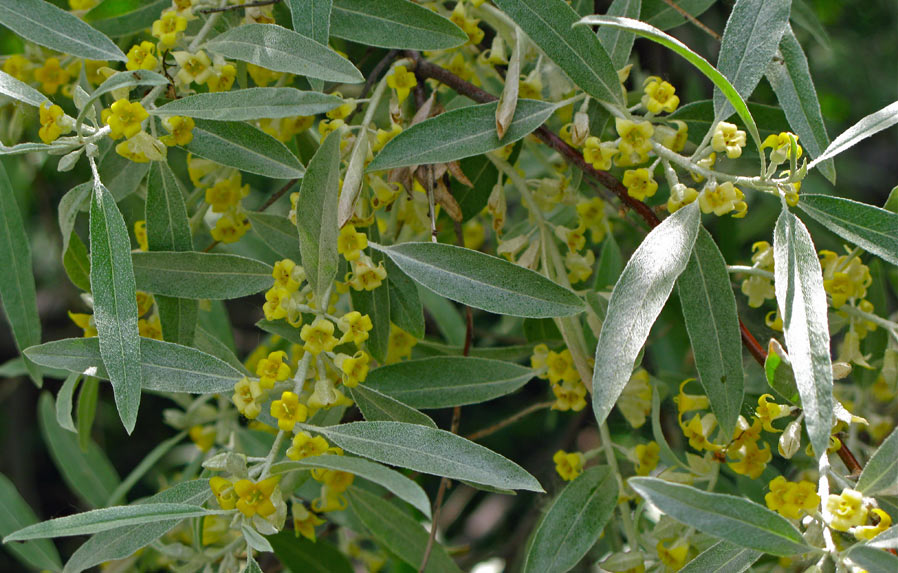A tree with delicate yellow flowers at Ashbridge’s Bay this week. Willowish leaves, but is it a willow? © BCP 2010
Friday, June 25, 2010 update:
Of course! How silly of me. The tree above is a Russian olive (Eleagnus angustifolia). A fellow Toronto nature photoblogger, who goes by the handle Don Watcher, answered my request for help with identification. (Click here to go to his site.)
I knew there were plenty of Russian olives at Ashbridge’s, but I guess I haven’t paid enough attention to them during the spring flowering season, or I would have recognized these lovely little blossoms.
As Don Watcher correctly points out, Russian olives are found all over Toronto and are considered invasive. Some experts consider them to be the Al Qaedas of the garden. U.S. conservation biologist Carole Brown puts the Russian olive and its cousin, the autumn olive (Elaeagnus umbellata) in the number six spot of her top 10 list of “Most Hated Plants.”
Here’s what she says on her website, Ecosystem Gardening, about the most hated plants list: “These plants have escaped cultivation and are now destroying native ecosystems because they outcompete native plants and provide no benefits to native wildlife.”
And about the Russian olive, in particular:
These are “plants so harmful to ecosystems they should never be planted, yet alone sold. Topping the noxious list this week is Autumn Olive (Elaeagnus umbellata) and Russian Olive (Elaeagnus angustifolia), two plants in the same genus that are leaving a swath of destruction in their path. . . .
“Autumn Olive is native to China, Korea, and Japan. Russian Olive is native to southeast Asia. They were brought to the US in 1830 for cultivation and sale by the horticultural industry. They were widely planted by wildlife managers as food and shelter for wildlife.”
She goes on to say that the Russian olive is invasive in every state of the union.
You can read the rest of her post here.
Thursday, June 24, 2010:
I took this picture earlier this week and have been trying ever since to figure out what the heck this tree is. It sure looks like a willow, but doesn’t seem to match anything I can find.
I searched through every shrub manual and tree book I have, including one called The Tree Identification Book, by George W.D. Symonds, in my attempt to figure out what it is. I also nearly wore my fingers to the bone going through Google images, putting in every possible search term I could think of, to try to match my picture with a photo already on the Web. No luck. How can a tree/bush have leaves like this, and not be a member of the Salix family?
Please help! Any suggestions welcome.
© BCP 2010




2 comments